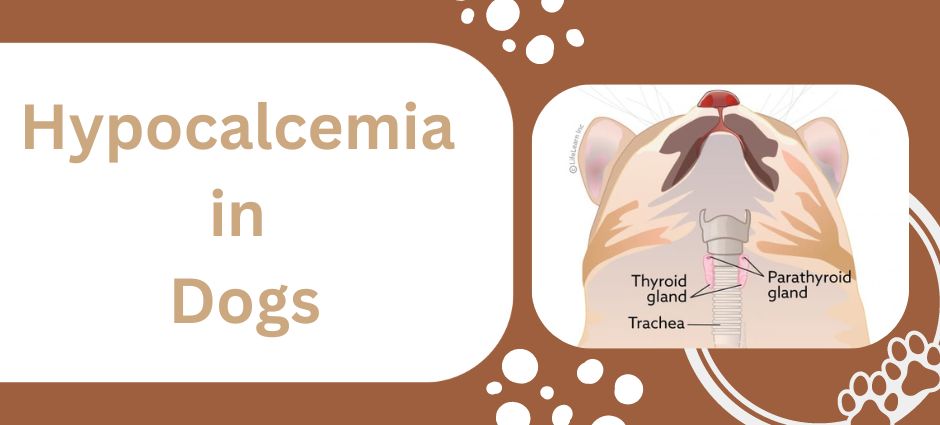Calcium is a mineral superstar in our canine companions’ bodies. It plays a crucial role in keeping bones strong, muscles functioning properly, and even nerve transmission.
But what happens when calcium levels dip too low? This condition, known as hypocalcemia in dogs, which can cause a range of concerning symptoms and needs veterinary attention.
Are you ready to read more? Let’s get into this!
By the way, don’t forget to check blog on glyphosate toxicity dogs treatment.
What is Hypocalcemia in Dogs?
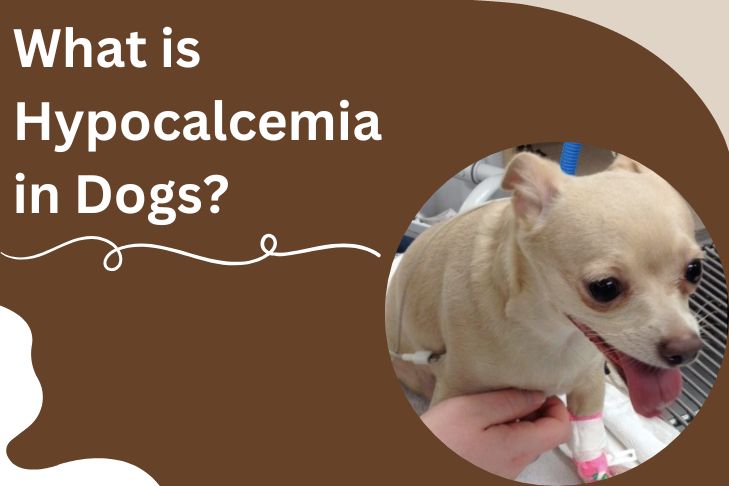
As the name suggests, hypocalcemia refers to a situation where a dog’s blood has low levels of calcium. This disrupts the delicate balance in their body, leading to issues with muscle contractions and nerve signals.
Signs and Symptoms of Hypocalcemia in Dogs
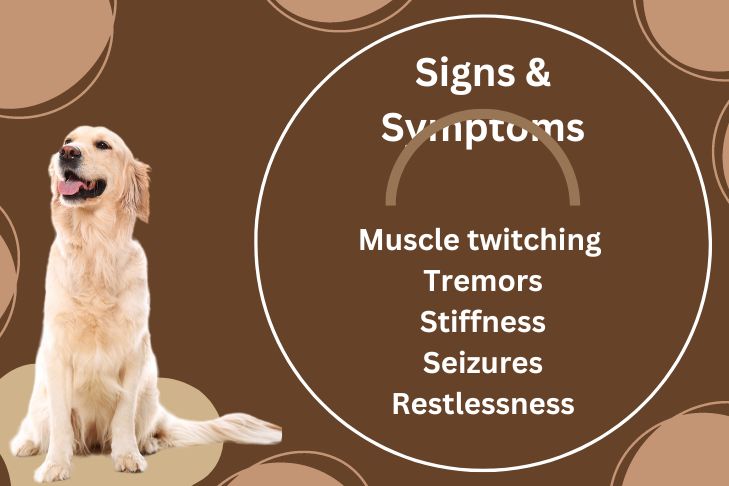
The signs of hypocalcemia can vary depending on the severity of the condition and how quickly it develops. Here is a list of some of the most common symptoms found in most cases:
- Muscle twitching or tremors: Often starting in the face and ears, these tremors can progress to involve the entire body.
- Stiffness or weakness: Your dog might appear reluctant to move or have a stiff, uncoordinated gait.
- Seizures: In a lot of cases, hypocalcemia can also trigger seizures.
- Restlessness or anxiety: Your furry friend might seem agitated, pacing, or panting excessively.
- Loss of appetite: Low calcium levels can zap your dog’s energy and make them disinterested in food.
- Fever: This can be a sign of the body’s struggle to compensate for the calcium imbalance.
What causes Hypocalcemia in Dogs?
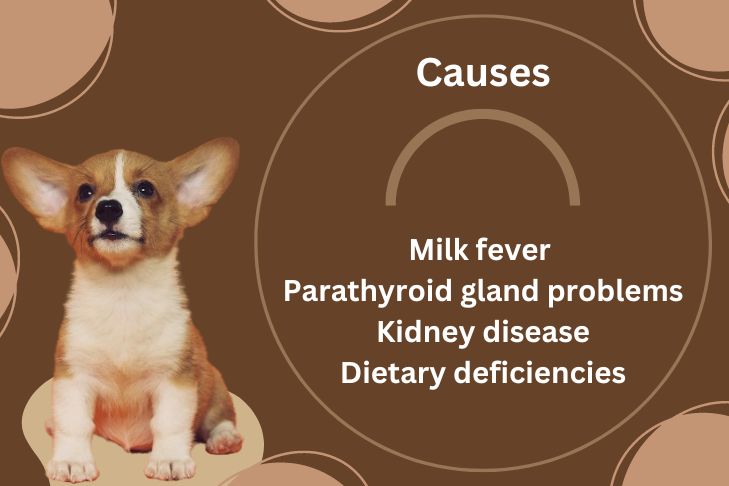
Several factors can contribute to hypocalcemia in dogs causes. Below is a brief list:
- Milk fever (eclampsia): This condition often affects nursing mothers, especially small breeds with large litters. Their bodies struggle to meet the high calcium demands of milk production, so you need to be extra careful with new mommy doggos.
- Parathyroid gland problems: These tiny glands regulate calcium levels. If they malfunction (primary hypoparathyroidism), calcium production can plummet.
- Kidney disease: Healthy kidneys help maintain calcium balance. When kidneys fail, they can’t perform this function effectively.
- Dietary deficiencies: A diet with less vitamin D can also contribute to hypocalcemia in the growing age of furry little pups.
- Certain medications or toxins: Some medications can interfere with calcium metabolism, and ingesting toxins like antifreeze can also cause a sudden drop in calcium levels in your chunky dog.
Read about: Dog mouth ulcer Symptoms and treatments
Diagnosing and Treating Hypocalcemia in Dogs
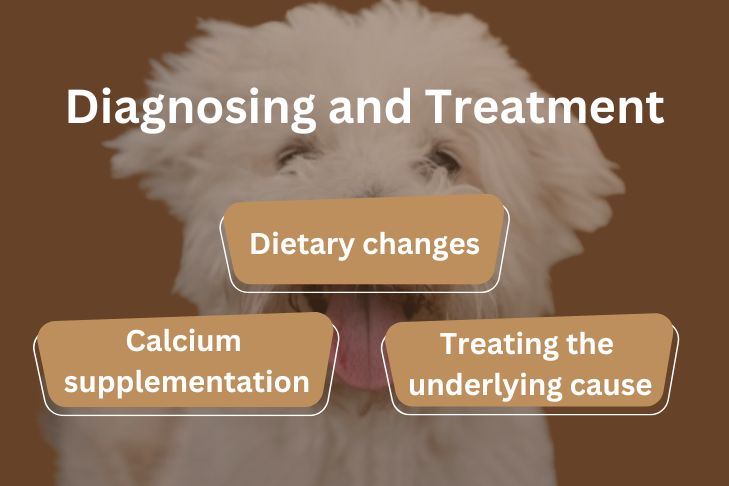
If you suspect your dog may have hypocalcemia, a trip to the vet is crucial, whether your small or large furry dog likes it or not. They will likely perform a blood test to measure calcium levels. Depending on the severity and the underlying cause, treatment might involve:
- Calcium supplementation: This can be administered intravenously or orally to raise calcium levels quickly.
- Treating the underlying cause: If the hypocalcemia is caused by condition like kidney disease, It will be essential to address that for long-term management.
- Dietary changes: For puppies or dogs with dietary deficiencies, a calcium-rich diet or supplements might be recommended.
How to Prevent Hypocalcemia in Dogs
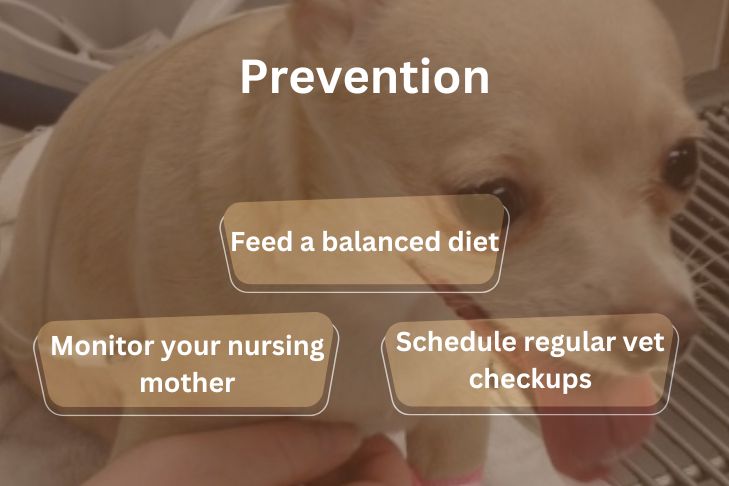
While not always preventable, you can take steps to minimize the risk of hypocalcemia in dogs:
- Feed a balanced diet: Choose a high-quality diet formulated for your dog’s age and activity level. Consider consulting your vet if you’re unsure about dietary needs.
- Monitor your nursing mother: If your dog is pregnant or nursing a large litter, talk to your vet about calcium supplementation to prevent milk fever.
- Schedule regular vet checkups: Early detection and treatment of underlying conditions that can cause hypocalcemia are crucial.
Beyond the Basics: Different Types of Hypocalcemia
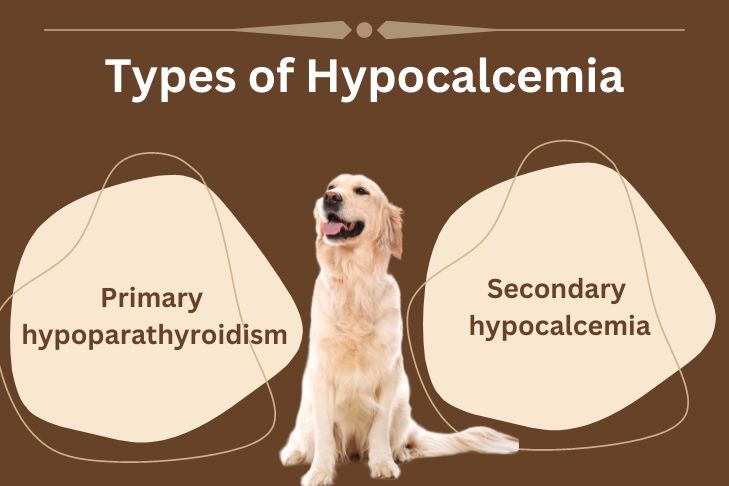
There are two main categories of hypocalcemia in dogs:
1. Primary hypoparathyroidism:
This is a less common condition where the parathyroid glands themselves are malfunctioning and producing insufficient parathyroid hormone (PTH).
PTH is responsible for stimulating calcium release from the bones and increasing calcium absorption from the intestines. Without enough PTH, calcium levels plummet.
2. Secondary hypocalcemia:
This is a more frequent scenario where another underlying condition disrupts calcium balance. Examples include kidney disease, pancreatitis (inflammation of the pancreas), and nutritional deficiencies.
Taking Action: When to See the Vet

Early diagnosis and intervention are key to managing hypocalcemia effectively. If you notice any of the warning signs mentioned earlier, especially muscle tremors, weakness, or seizures in your little chunky dog, don’t hesitate to contact your veterinarian.
Even if the symptoms seem mild, it’s very important to identify the cause and prevent them from getting any worse.
Living with a Dog with Hypocalcemia
With proper diagnosis, treatment, and management, many dogs with hypocalcemia can live happy and healthy lives, which is what all dog lovers want, right?.
By being aware of the signs and symptoms of hypocalcemia in dogs and working closely with your veterinarian, you can ensure your furry friend gets the care they need to thrive, and you can help them. Happy pup parenting!



